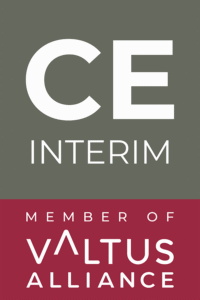Non avete abbastanza tempo per leggere l'intero articolo? Ascoltate il riassunto in 2 minuti.
La fine di un vecchio riflesso
Per decenni, la spina dorsale industriale della Germania si è affidata a un riflesso collaudato. Quando i margini si restringevano o i mercati calavano, il manuale era chiaro: ristrutturare. Tagliare i costi. Sospendere gli investimenti. Riorganizzare l'organigramma. Aspettare che il ciclo si stabilizzi.
Questo manuale ha funzionato in un'epoca diversa, basata sulla stabilità, su lunghi cicli di produzione e su variabili controllabili.
Oggi è una responsabilità.
Le ristrutturazioni non creano più competitività. Sta proteggendo le aziende dal movimento. L'industria tedesca non sta lottando per mancanza di intelligenza. Sta lottando per mancanza di velocità.
Le sfide ora sono strutturali. I prezzi dell'energia sono appiccicosi. La domanda è imprevedibile. Le catene di approvvigionamento si sono frammentate. La manodopera sta invecchiando. Il capitale non è più paziente. E l'intelligenza artificiale sta riscrivendo la logica di produzione più velocemente di quanto le aziende possano rispondere.
In questo ambiente, i tagli non vi salveranno. La reinvenzione è l'unica strada percorribile.
Perché la ristrutturazione non è più una strategia
È stato progettato per la stabilità, non per la volatilità.
La ristrutturazione tradizionale presuppone un futuro che assomiglia ancora al passato. Chiudere uno stabilimento qui, risparmiare sui costi lì, consolidare i team e mantenere intatto il nucleo centrale. Ma cosa succede quando il “nucleo” stesso non è più competitivo?
L'ambiente industriale odierno viene rimodellato da:
- Apporti energetici inaffidabili
- Complessità normativa
- Cicli di automazione guidati dall'intelligenza artificiale
- Perturbazioni commerciali di natura geopolitica
- Velocità di innovazione senza precedenti
Nessuno di questi aspetti viene affrontato tagliando le spese generali. Anzi, la riduzione dei costi spesso riduce la capacità di risposta di un'organizzazione. Preserva la liquidità, ma erode la capacità.
Crea l'illusione del movimento
La ristrutturazione è un segnale di decisione. I consigli di amministrazione vedono i numeri muoversi. Gli investitori vedono diminuire l'organico. Ma all'interno dell'azienda cambia ben poco.
Le strutture decisionali rimangono invariate. I layout delle fabbriche rimangono inalterati. I cicli di pianificazione continuano come prima. E la paura di sbagliare continua a dettare il modo in cui le persone si muovono.
La Germania è diventata un maestro dell'ottimizzazione incrementale. Ma questa disciplina, un tempo un vantaggio competitivo, ora ostacola la reinvenzione strategica.
Cosa richiede in realtà il reinventarsi
1. Riprogettare l'impronta industriale
La reinvenzione inizia da dove e come si producono le cose, non solo da ciò che viene tagliato.
La Germania ha ancora valore per la produzione ad alta complessità e fiducia: componenti aerospaziali, sistemi automobilistici, farmaceutici, macchinari. Ma la produzione in serie? Assemblaggio a basso margine?
Ora questo appartiene a vicini più economici e veloci nell'Europa centrale e orientale o nel Nord Africa.
Il vero cambiamento consiste nel passare dal pensiero “sede centrale vs offshore” alle reti di produzione distribuite. I vincitori sono coloro che ridisegnano la propria impronta industriale, allocando le risorse in base al valore strategico e non alla tradizione.
Non si tratta più di ritorno produzione in Germania. Si tratta di ripensare a ciò che appartiene in Germania e cosa no.
2. Trattare l'IA come infrastruttura operativa
L'intelligenza artificiale non è un progetto. È il nuovo sistema nervoso industriale.
Eppure, in gran parte del Mittelstand tedesco, L'intelligenza artificiale rimane bloccata in modalità “pilota”. Le aziende testano la manutenzione predittiva in una struttura. O automatizzano uno strumento di reporting. Ma questi successi raramente hanno scala. Perché?
Perché l'IA viene ancora trattata come un aggiornamento informatico, non come una trasformazione del modo in cui vengono prese le decisioni.
Reinventare significa inserire l'intelligenza artificiale nella pianificazione, nella logistica, nell'approvvigionamento, nella qualità, nella programmazione della produzione, non come una toppa, ma come un'infrastruttura integrata.
3. Cambiare il comportamento della leadership
Questa è la parte più difficile.
La reinvenzione richiede un ritmo diverso. Cicli di feedback più rapidi. Collaborazione interfunzionale. Team di prima linea responsabilizzati. Meno comitati direttivi.
Molti consigli di amministrazione sanno cosa si deve fare. Ma esitano. Discutono. Aspettano l'allineamento perfetto.
Nel frattempo, l'ambiente si sposta di nuovo.
Le aziende non rimangono indietro perché non hanno una visione. Rimangono indietro perché non riescono a muoversi abbastanza velocemente.
La reinvenzione funziona solo quando la cultura della leadership passa dal controllo alla velocità.
Dalla strategia all'esecuzione: Cosa devono fare gli amministratori delegati
A. Ridurre il divario tra sapere e fare
La maggior parte degli amministratori delegati tedeschi oggi conosce la strategia. Digitalizzare le operazioni. Creare una ridondanza transfrontaliera. Prepararsi all'automazione. Ridurre la dipendenza energetica.
Ciò che manca è la disciplina di esecuzione.
Il divario tra PowerPoint e la produzione è oggi il luogo più pericoloso di un'azienda. I ritardi aumentano la complessità. Le riorganizzazioni senza seguito prosciugano il morale. E i piani di trasformazione che non riescono a dare risultati in tempi brevi perdono credibilità.
La reinvenzione inizia quando la leadership colma questo divario, non solo ridisegnando la strategia, ma anche dando un ritmo di esecuzione.
B. Costruire uno slancio di 90 giorni, non visioni di 5 anni.
I CEO devono smettere di aspettare un allineamento completo prima di agire.
Alcune delle trasformazioni industriali di maggior successo partono da una singola cellula, linea o squadra. Una fabbrica implementa la programmazione guidata dall'intelligenza artificiale. Una regione sperimenta un'impronta riequilibrata. Un'unità passa a una nuova cadenza decisionale.
Non si tratta di scarsa ambizione. Si tratta di movimento. I piccoli successi esecutivi sono il modo in cui la reinvenzione si sviluppa.
Il momentum è più potente della strategia quando l'ambiente cambia continuamente.
C. Non ristrutturare la tua strada verso l'irrilevanza
La ristrutturazione riduce i costi. Ma riduce anche le opzioni. E oggi la Germania ha bisogno di più opzioni, non di meno.
Le aziende che continuano a tagliare rischiano di perdere le capacità di cui hanno bisogno per competere in un mondo volatile, digitale e decentralizzato.
Il manuale industriale deve passare dalla conservazione alla creazione. Da reattivo a proattivo. Dalla difesa dei margini alla capacità di reinvenzione.
Perché è importante ora
Perché il tempismo è il vero rischio.
La Germania ha ancora la profondità ingegneristica, la base di capitale, la credibilità e la brand equity per essere leader. Ma il divario di velocità sta crescendo. E a differenza dei cicli passati, questo non si correggerà da solo.
Non c'è nessuna ripresa dietro l'angolo. Nessun ritorno sicuro alle condizioni “pre-crisi”.
Le aziende che si muovono ora, che iniziano a reinventare il proprio modello industriale, la cadenza della leadership e i muscoli di esecuzione dell'IA, saranno le padrone del prossimo decennio.
Chi sta ancora ristrutturando continuerà a guadagnare tempo. Finché il tempo non finirà.
Come i leader ad interim supportano i primi 90 giorni
Per molti CEO, la sfida non è la visione, ma la larghezza di banda. Sanno che è necessario reinventarsi, ma i team interni sono sommersi da incendi operativi. La politica blocca le decisioni. L'esecuzione rallenta.
È qui che dirigenti ad interim spesso intervengono.
Non per consultarsi. Ma per muoversi.
Una stabilizzazione industriale di 90 giorni. Un programma di riprogettazione dell'impronta. Uno sprint di implementazione dell'intelligenza artificiale. Un reset della governance dell'esecuzione.
I leader ad interim apportano l'autorità, la neutralità e il ritmo operativo che molte aziende non riescono ad attivare internamente, almeno non abbastanza velocemente.
Non sostituisce la leadership. È un ponte tra strategia e movimento.
Il libro di gioco di cui la Germania ha bisogno
La domanda non è più “come ridurre i costi?”. È “come costruire qualcosa di più forte?”.”
La ristrutturazione è stata una risposta razionale a un'epoca diversa. Ha aiutato molte aziende tedesche a sopravvivere.
Ma oggi la sopravvivenza non sarà sufficiente.
Ora è necessario reinventarsi.
Con velocità, concentrazione ed esecuzione.
E soprattutto con il coraggio di guidare prima che le condizioni siano perfette.





